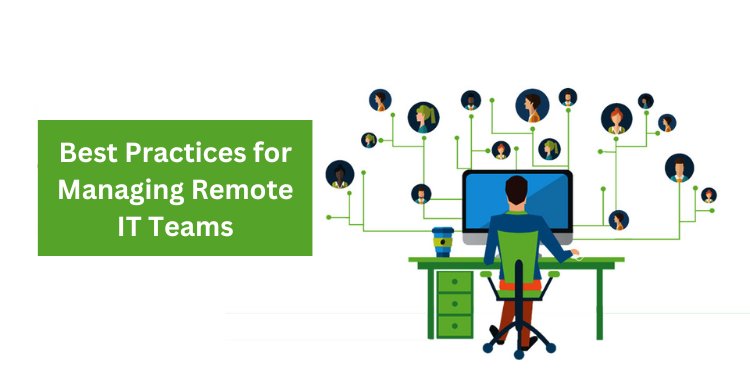Best Practices for Managing Remote IT Teams

In an increasingly digital world, the demand for remote IT teams has skyrocketed. However, managing such teams effectively requires a unique set of skills and practices. This blog aims to provide insights into the best practices for successfully leading remote IT teams.
-
Clear Communication Channels:
Establishing clear and accessible communication channels is paramount for remote teams. Utilize tools like Slack, Microsoft Teams, or Zoom for regular check-ins, project updates, and informal conversations. Encourage open communication and set expectations for response times to ensure everyone stays connected and informed.
-
Set Clear Goals and Expectations:
Clearly define team goals, objectives, and individual responsibilities. Remote team members should have a clear understanding of what is expected of them and how their work contributes to the overall success of the project. Regularly revisit goals to ensure alignment and make adjustments as necessary.
-
Foster a Collaborative Culture:
Promote a culture of collaboration and teamwork within the remote IT team. Encourage knowledge sharing, brainstorming sessions, and virtual team-building activities to strengthen bonds and foster creativity. Leverage collaboration tools such as Trello, Asana, or Jira to facilitate project management and task allocation.
-
Provide Adequate Resources and Support:
Ensure remote team members have access to the necessary resources, tools, and support systems to perform their tasks efficiently. Invest in reliable technology infrastructure, provide training opportunities, and offer ongoing support to address any challenges or issues that may arise.
-
Prioritize Work-Life Balance:
Remote work can blur the lines between professional and personal life, leading to burnout and decreased productivity. Encourage team members to establish boundaries between work and personal time, and lead by example by respecting these boundaries yourself. Promote flexible work schedules and encourage regular breaks to help maintain work-life balance.
-
Embrace Remote-Friendly Practices:
Take advantage of remote-friendly practices such as asynchronous communication, flexible scheduling, and outcome-based performance evaluation. Trust your team members to manage their time and tasks effectively, focusing on results rather than micromanaging their every move.
Managing remote IT teams requires a combination of effective communication, clear goal setting, collaborative culture, adequate support, work-life balance, and remote-friendly practices. By implementing these best practices, you can create a cohesive and high-performing remote team capable of delivering exceptional results in today's digital landscape.
What's Your Reaction?















